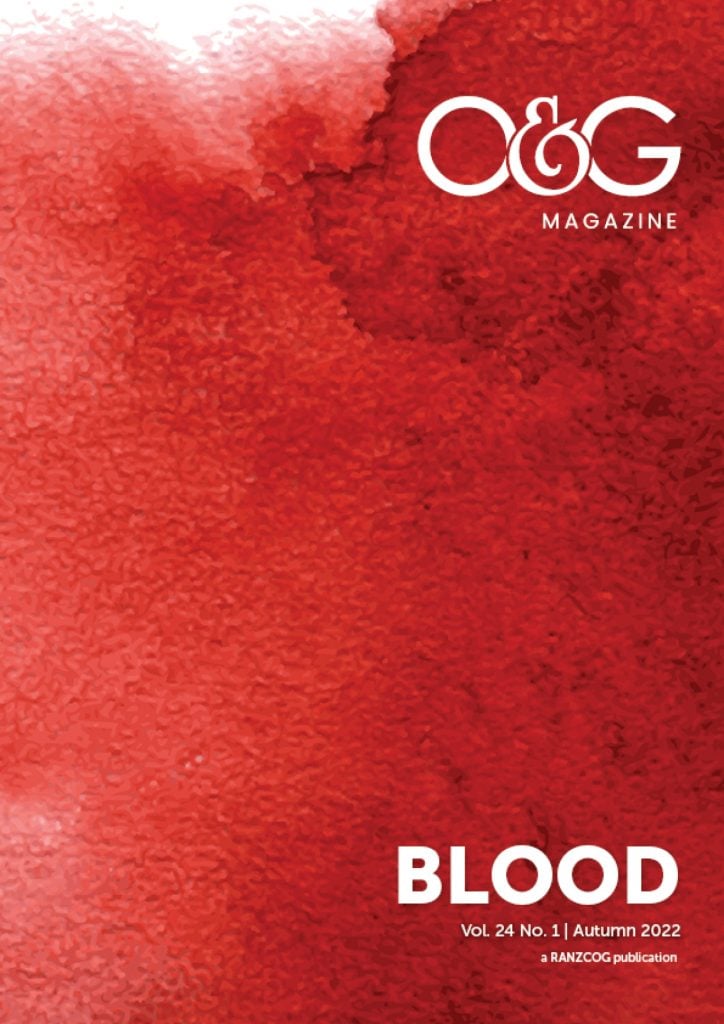More than 800 million girls and women menstruate every day.1 Albeit a physiological process, experience of menstruation is strongly influenced by sociocultural and religious beliefs, which may also affect how women view menstrual disorders and seek help. We acknowledge that although we have used the terms ‘girl’ and ‘woman’, not everyone who menstruates identifies as a girl or woman. This article focuses on menstruation experiences of women and girls. We do not have the expertise to address the specific challenges faced by non-binary people who menstruate.
Menstrual health is defined as a ‘state of complete physical, mental, and social well-being and not merely the absence of disease or infirmity, in relation to the menstrual cycle’.2 3 It is also being increasingly recognised as integral to improving global health, achieving the Sustainable Development Goals, realising gender equity and human rights.4 In this article we aim to review science, sociocultural and environmental issues pertaining to menstruation.
Menstruation and society
Pliny the Elder, writing in his work Naturalis Historia in the 1st century AD said of contact with menstrual blood, ‘The wine is sour, flowers wilt, seeds dry out, bee colonies die, even the mirror becomes dull and ivory loses its gloss’. Most of the world’s major religions including Islam, Christianity, Judaism and Hinduism, refer to menstruating women as unclean. A significant proportion of menstruating girls and women go through a miserable cycle of pain, discomfort, shame, anxiety and isolation during their periods.
In many Asian cultures, women are restricted from participating in daily lives, not allowed to offer prayers, touch holy books, enter kitchens, take baths, and have to bury their clothes used during menstruation due their association with evil spirits.5 For example, in Western Nepal, many communities follow ‘Chaupadi’ a harmful religious practice where women and girls are isolated and sent to menstruation ‘Chhau’ huts, which are livestock sheds, to live and sleep.6 Menstruation is considered private ‘women’s business’ in many Aboriginal and Torres Strait Islander cultures, making it a particularly sensitive topic to discuss.7
Because of deep-rooted stigma and taboos in most cultures, menstruation is rarely discussed in families and for many girls health information comes either too late or never. According to a UNICEF study, one-in-three girls in South Asia had no knowledge of menstruation before their first period, 48% of girls in Iran thought it was a disease,8 and 48% of girls in the UK were embarrassed by their periods.9 For most young women and girls, a major concern of menstruation is concealment, and the worst form of menstrual shame is blood being seen. In 2015, Kiran Gandhi decided to ‘free bleed’ while running the London Marathon. Her decision garnered international attention and was considered a radical move. Ms Gandhi received praise for combating stigma as well as criticism for being ‘disgusting’ ‘unladylike’ ‘unsanitary’ and ‘attention-seeking’ showing that period stigma runs deep and that a lot of work is still needed to build a world that is inclusive of menstruation as a normal, physiological process.
In contrast, many cultures around the world celebrate menarche and the ‘coming of age’ with special ceremonies. In south India, for example, a girl’s first period is welcomed through a ceremony called Ritushuddhi where the girl receives gifts and clothes. In Japan, when a girl gets her first period, the family celebrates by eating a traditional dish called sekihan, made of sticky rice and adzuki beans, the red colour symbolising happiness. In Iceland, girls are treated to a red and white cake when they get their first period. Some of these traditions can be traced back to pre-mainstream-religious societies where women’s bodies were thought to be spiritually powerful, with this power increasing during menstruation. These ceremonies may have helped foster positive associations with menstruation and bodily functions.
Period poverty and scope of problem
WHO defines period poverty ‘as lack of knowledge of menstruation and an inability to access necessary sanitary materials’.10
Limited access to pads, tampons and cups pushes women to use proxy materials such as toilet paper, socks, leaves, mud, animal skins etc to absorb menstrual flow.
Period poverty is a global issue, not just for low- and middle-income countries. According to a survey conducted by an Australian based NGO, Share the Dignity, more than one-in-five Australians are using toilet paper or socks to manage their periods.11 One in 12 in New Zealand cannot afford menstrual products. Only 12% of 355 million menstruating women in India use sanitary products during menstruation.12
UNICEF recommends access to WASH (water, sanitation and hygiene) facilities during menstruation as crucial for menstrual health and hygiene; this includes private space, safe disposal of sanitary products, running water and soap to wash hands.13 Limited access to menstrual products compounded with lack of appropriate and hygienic infrastructure at schools forces girls absenteeism due to lack of privacy, dignity and fear of exposing menstrual flow, significantly affecting their performance at school, which has far reaching implications in the communities. Around 500 million girls and women lack access to adequate facilities to manage their periods worldwide. Almost 40% of girls and women surveyed in the Pacific reported lack of access to facilities to manage their periods hygienically. In Ethiopia, around 50% of girls miss school every month during their periods.14 UNESCO reports 10% of African girls quit school because of menstruation-related issues.15
Ending period poverty
Peak bodies advocating for women’s health, including RANZCOG, are calling for action from governments to remove the cost of menstruation as a step forward towards gender equality. In Australia, from January 2019 Goods and Service Tax (GST) was removed on menstrual products known as ‘tampon tax’.16 Scotland became the first country in the world to make period products free for all in November 2020. New Zealand has made period products available for free to all students in schools from June 2021. Some jurisdictions in Australia now have menstrual products available for free in government schools for students.
Strategies to end menstruation stigma
Breaking the deep-rooted attitudes of secrecy and stigma around menstruation needs a holistic approach. Age appropriate, gender and culturally sensitive menstrual education in schools, along with creating supportive and positive environments where girls and women can freely talk about their concerns, confidently manage their periods and access healthcare early to address problems related to periods such as endometriosis, menstrual migraine and premenstrual dysphoric disorder. It is also important for men and boys to understand menstruation so they can support their partners, daughters, mothers, students, employees and peers.17 #periodemoji, a ‘drop of blood’ emoji to signify menstruation, was accepted by the Unicode Consortium in 2019 and is considered a step forward in normalising conversations around menstruation.
Menstrual health interventions
Hennegan et al conducted a systematic review and qualitative meta synthesis of women and girls’ experience of menstrual health interventions in low- and middle-income countries.18 Included studies captured experiences from six countries and over 900 participants from India, Uganda, Kenya, Ethiopia, Zimbabwe and South Africa. They concluded that menstrual health interventions provoked changes to women’s and girls’ expectations and may mediate desired impacts on outcomes such as school attendance.
In an intervention-based study in rural India conducted from 2018–2019 in 202 remote areas, including educating frontline health workers and teachers, and provision of free menstrual products to girls in schools and community centres, outcomes were assessed in 27 randomly selected villages. Of 550 girls assessed, use of safe menstrual products increased from 69% to 90.5%. Their knowledge of the uterus as the origin of menstrual blood increased from 6.3% to 66% with significant reduction in school absenteeism during menstruation from 24% to 14%.19
Sustainable menstruation
Menstrual products can have a huge impact on the environment, with the average woman using 10,000–12,000 single-use menstrual products in their lifetime. Pads take up to 500 years to biodegrade. In Australia alone, around 300 million tampons and 500 million pads end up in landfill each year.20
Biodegradable pads and tampons, period pants, cloth pads and menstrual cups are some of the modern sustainable alternatives, which are also more economical long term (eg. a tampon costs 50 cents while a menstrual cup costs 0.09cents per use).21 22
A 2019 study from the Lancet23 showed that menstrual cups are a safe option for menstrual management with no adverse effects on vaginal flora. However, there were incidences of severe pain, vaginal wounds, allergies and toxic shock syndrome. Further research into cost effectiveness and environmental impacts of different menstrual products is needed.
Our feature articles represent the views of our authors and do not necessarily represent the views of the Royal Australian and New Zealand College of Obstetricians and Gynaecologists (RANZCOG), who publish O&G Magazine. While we make every effort to ensure that the information we share is accurate, we welcome any comments, suggestions or correction of errors in our comments section below, or by emailing the editor at [email protected].
References
- www.globalwaters.org/events/menstrual-hygiene-day-2021/
- Barrington DJ, et al. Experience of menstruation in high income countries: A systematic review, qualitative evidence synthesis and comparison to low and middle income countries. PLoS Med. 2021;16(7); e0255001.
- Hennegan J, et al. Women’s and girl’s experiences of menstruation in low- and middle-income countries: A systematic review and qualitative metasynthesis. PLoS Med. 2019;16(5):e1002803.
- Hennegan J, et al. Menstrual health: a definition for policy, practice, and research. Sex Reprod Health Matters. 2021;29(1):1911618.
- Garg S, Anand T, Menstruation related myths in India: Strategies for combating it. J Family Med Prim Care. 2015;4(2):184-6.
- Thakuri DS, et al. A harmful religio-cultural practice (Chhaupadi) during menstruation among adolescent girls in Nepal: Prevalence and policies for eradication. PLoS One. 2021;16(9):e0256968.
- Krusz E, et al. Menstrual health and hygiene among Indigenous Australian girls and women: barriers and opportunities. BMC Women’s Health. 2019;19:146.
- https://plan-international.org/sexual-health/menstruation
- Normalising menstruation and empowering girls,. Lancer Child Adolesc Health. 2018;2(6):379.
- https://pmnch.who.int/news-and-events/news/item/28-05-2020-menstrual-hygiene-and-health-a-call-for-dignity-rights-and-empowerment
- www.sharethedignity.org.au/
- https://plan-international.org/sexual-health/menstruation
- www.unicef.org/media/91341/file/UNICEF-Guidance-menstrual-health-hygiene-2019.pdf
- https://plan-international.org/sexual-health/menstruation
- Normalising menstruation and empowering girls,. Lancer Child Adolesc Health. 2018;2(6):379.
- www.aph.gov.au/About_Parliament/Parliamentary_Departments/Parliamentary_Library/FlagPost/2018/November/Removing_GST_on_feminine_hygiene_products
- Garg S, Anand T, Menstruation related myths in India: Strategies for combating it. J Family Med Prim Care. 2015;4(2):184-6.
- Hennegan J, et al. Women’s and girl’s experiences of menstruation in low- and middle-income countries: A systematic review and qualitative metasynthesis. PLoS Med. 2019;16(5):e1002803.
- Vayeda M, et al. Improving menstrual hygiene management among adolescent girls in tribal areas of Gujarat: an evaluation of an implementation model integrating the government service delivery system. Sex Reprod Health Matters. 2021;29(2):1992199.
- www.cityservices.act.gov.au/recyclopaedia/factsheets/menstrual-products
- www.cityservices.act.gov.au/recyclopaedia/factsheets/menstrual-products
- https://sustainableperiodproject.org/resource-kit/
- Eijk, et al. Menstrual cup use, leakage, acceptability, safety, and availability: a systematic review and meta-analysis. Lancet Public Health. 2019;4:e376-93.







Leave a Reply